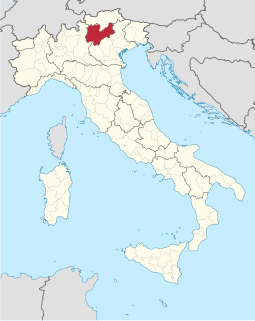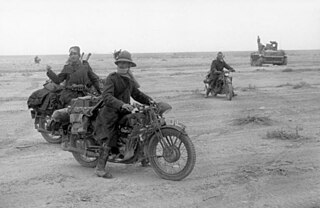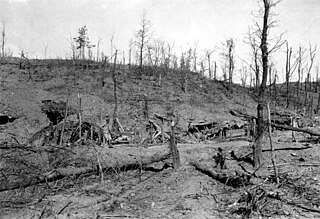
The Dolomites, also known as the Dolomite Mountains, Dolomite Alps or Dolomitic Alps, are a mountain range located in northeastern Italy. They form part of the Southern Limestone Alps and extend from the River Adige in the west to the Piave Valley in the east. The northern and southern borders are defined by the Puster Valley and the Sugana Valley. The Dolomites are located in the regions of Veneto, Trentino-Alto Adige/Südtirol and Friuli Venezia Giulia, covering an area shared between the provinces of Belluno, Vicenza, Verona, Trentino, South Tyrol, Udine and Pordenone.

Trentino officially the Autonomous Province of Trento, is an autonomous province of Italy, in the country's far north. The Trentino and South Tyrol constitute the region of Trentino-Alto Adige/Südtirol, an autonomous region under the constitution. The province is composed of 177 comuni (municipalities). Its capital is the city of Trento (Trent). The province covers an area of more than 6,000 km2 (2,300 sq mi), with a total population of 541,098 in 2019. Trentino is renowned for its mountains, such as the Dolomites, which are part of the Alps.

The 1st Army was an Royal Italian Army field army, in World War I, facing Austro-Hungarian and German forces, and in World War II, fighting on the North African front.

Ala is a comune in Trentino, north-eastern Italy. Until the First World War, it was an important border town between the Kingdom of Italy and the Austro Hungarian Empire.

The Battle of Vittorio Veneto was fought from 24 October to 3 November 1918 near Vittorio Veneto on the Italian Front during World War I. After having severely defeated Austro-Hungarian troops during the defensive Battle of the Piave River, the Italian army launches a great counter-offensive: the Italian victory marked the end of the war on the Italian Front, secured the dissolution of the Austro-Hungarian Empire and contributed to the end of the First World War just one week later. The battle led to the capture of over 5,000 artillery pieces and over 350,000 Austro-Hungarian troops, including 120,000 Germans, 83,000 Czechs and Slovaks, 60,000 South Slavs, 40,000 Poles, several tens of thousands of Romanians and Ukrainians, and 7,000 Italians and Friulians.

The Sixth Battle of the Isonzo also known as the Battle of Gorizia was the most successful Italian offensive along the Soča (Isonzo) River during World War I.

The Battle of Asiago(Battle of the Plateaux) or the Trentino Offensive, nicknamed Strafexpedition by the Italians, was a major counteroffensive launched by the Austro-Hungarians on the Italian Front on 15 May 1916, during World War I. It was an unexpected attack that took place near Asiago in the province of Vicenza after the Fifth Battle of the Isonzo.

Cles is a town and comune in Trentino, in the Trentino-Alto Adige/Südtirol region of northern Italy. It is the main town of Val di Non.

The Armistice of Villa Giusti or Padua ended warfare between Italy and Austria-Hungary on the Italian Front during World War I. The armistice was signed on 3 November 1918 in the Villa Giusti, outside Padua in the Veneto, Northern Italy, and took effect 24 hours later.

Canal San Bovo is a comune (municipality) in Trentino in the northern Italian Region Trentino-Alto Adige/Südtirol, located about 90 kilometres (56 mi) north-east of Trento. Canal San Bovo is a typical alpine village; from 1401 to 1918 it was a possession of the Austro-Hungarian Empire.

Levico Terme is a comune (municipality) in Trentino in the northern Italian region Trentino-Alto Adige/Südtirol, located about 15 kilometres (9 mi) southeast of Trento. As of 30 June 2012, it had a population of 7,668 and an area of 62.9 square kilometres (24.3 sq mi).

Sfruz is a comune (municipality) in Trentino in the northern Italian region Trentino-Alto Adige/Südtirol, with some 230 inhabitants in 2009 and an area of 11.7 square kilometres (4.5 sq mi).

This article is about Italian military operations in World War I.

The Bollettino della Vittoria is the official document after the Armistice of Villa Giusti with which General Armando Diaz, the supreme commander of the Royal Italian Army, announced, on November 4, 1918, the surrender of the Austro-Hungarian Empire and the victory of the Kingdom of Italy in World War I.

Adamello is a mountain in Lombardy, Italy. With an elevation of 3,539 metres (11,611 ft), it is the second highest peak of the Adamello-Presanella Alps. It is located in Valcamonica, Lombardy.

Štivor is a village near Prnjavor in Bosnia and Herzegovina. The settlement is almost completely inhabited by Italians whose origins are from Sugana Valley (Italian-Valsugana) in the present autonomous province of Trentino, Northern Italy.

The Nonsberg Group is a mountain range in South Tyrol and Trentino in Italy and part of the Southern Limestone Alps. A large part of the Nonsberg Group is formed by the Mendelkamm. Their highest peak is the Laugenspitze. The Nonsberg Group is bounded in the east by the Etschtal, to the north by the Prissian High Forest on the Gampen Pass and in the west by the Non Valley.

The White War is the name given to the fighting in the high-altitude Alpine sector of the Italian front during the First World War, principally in the Dolomites, the Ortles-Cevedale Alps and the Adamello-Presanella Alps. More than two-thirds of this conflict zone lies at an altitude above 2,000m, rising to 3905m at Mount Ortler. In 1917 New York World correspondent E. Alexander Powell wrote: “On no front, not on the sun-scorched plains of Mesopotamia, nor in the frozen Mazurian marshes, nor in the blood-soaked mud of Flanders, does the fighting man lead so arduous an existence as up here on the roof of the world.”

Emilio Battisti was an Italian general during World War II.

The Crozzon di Lares is a mountain in Trentino-Alto Adige, Italy. It is located in Val Rendena, Province of Trento.




















